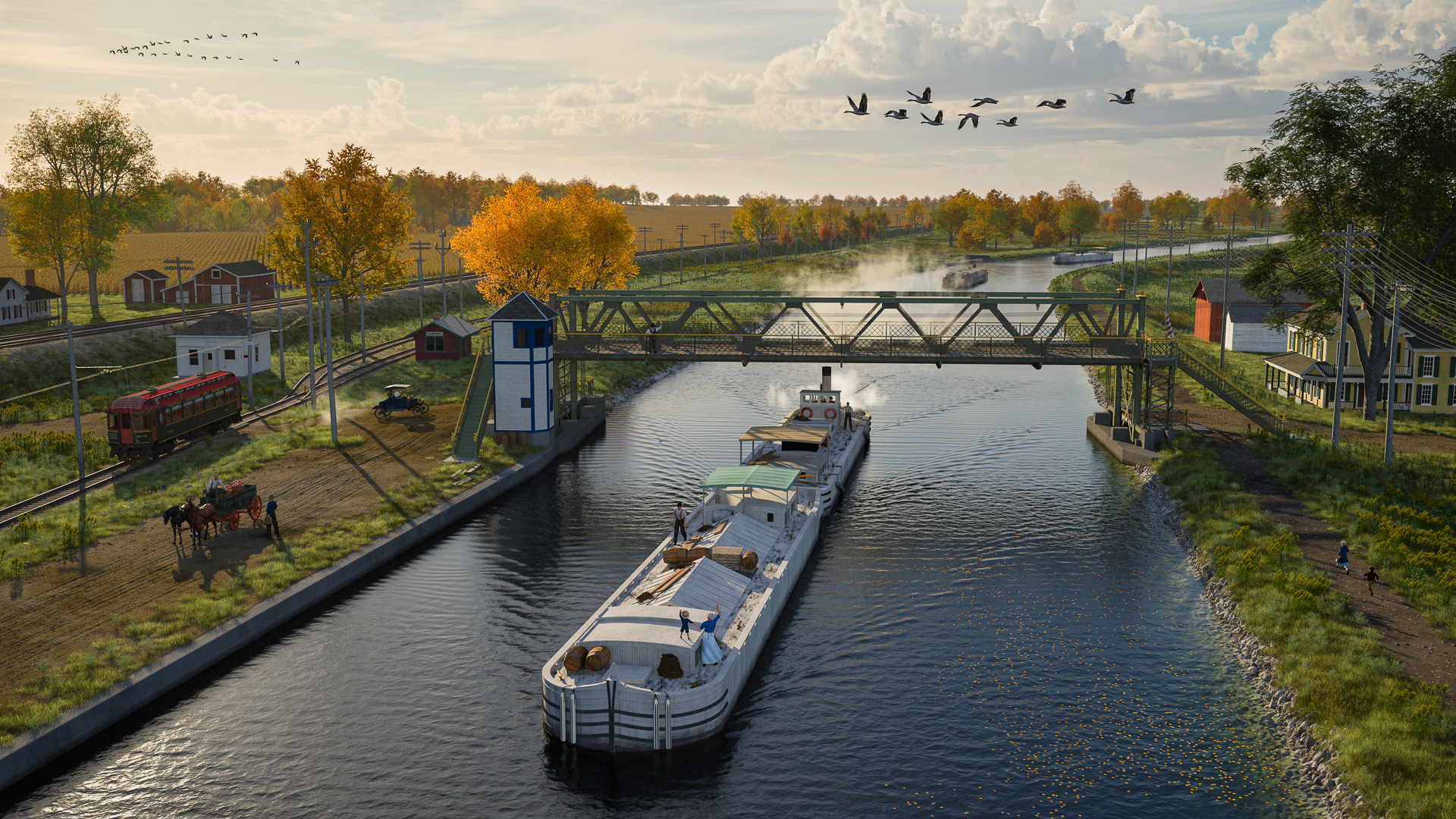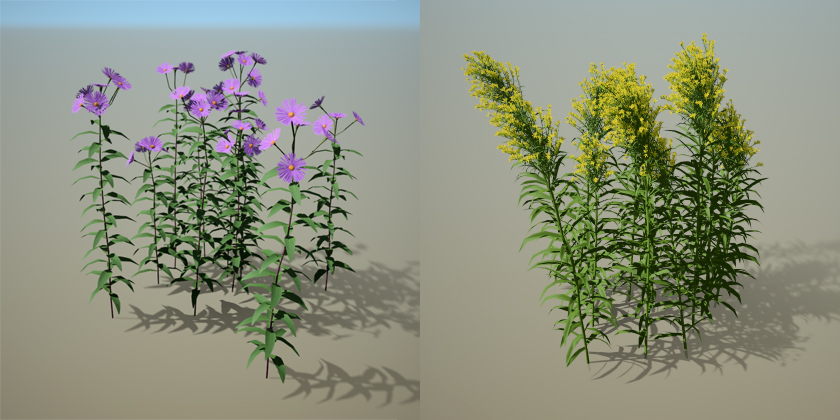
Now that the terrain and major human-built objects are in place, it’s time to work on the scene’s natural elements: grass, wildflowers, weeds, and trees.
But before I could start modeling, I had to familiarize myself with the species that are native to this area – and would have been a hundred years ago. The National Wildlife Federation Field Guide to Trees of North America and the National Wildlife Federation Field Guide to Wildflowers of North America became my constant companions this fall. Both are densely packed with photos, maps and detailed descriptions of hundreds of species. Great for browsing at home as well as using in the field.
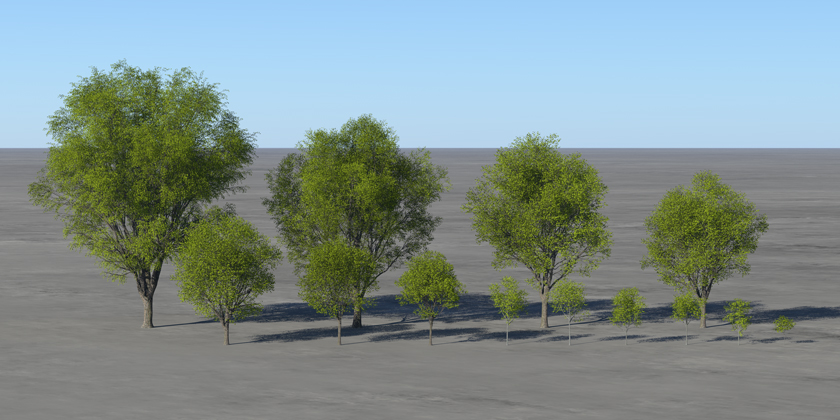
Sometimes it was possible to identify trees in historical photos. I settled on a mix of northern red oak, black walnut, and sugar maple. Some trees that are common here now, such as black locust and honey locust, were omitted because they are not native and I was not able to find out when they would have been introduced.
I collected and scanned leaves for identification and to use for modeling. Scanned leaves can be processed to create the different textures needed for 3D model construction.

All of the foliage was created in SpeedTree, an industrial-strength tree and foliage 3D modeling tool that’s widely used in the motion picture and gaming industries. SpeedTree is one of those applications that does only one thing, but it does it very, very well. It has a short (but steep) learning curve. But once you begin to master it you can build just about anything.
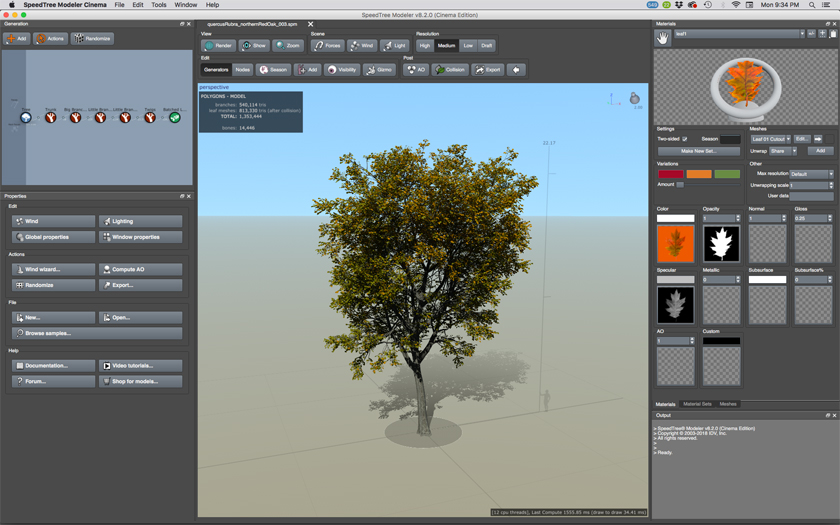
I used SpeedTree to make several models of each tree species, in various stages of growth. I also made about a half-dozen types of wildflowers, all of which should have been present in late September-early October 1916.
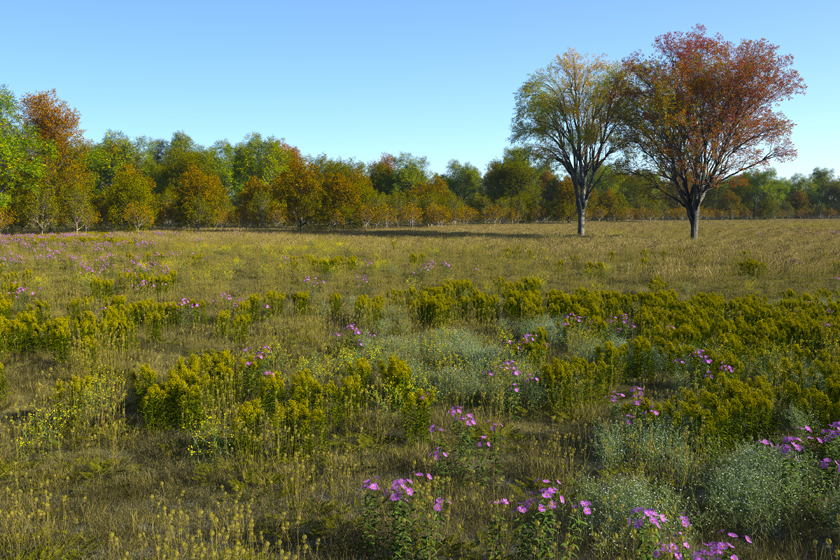
As a test, many of the species were mixed and placed in a new Terragen scene. Terragen shines when it comes to foliage because of its ability to place populations of thousands of models, its sophisticated noise and fractal functions that can be used to create natural-looking species distributions, and because of its renderer. This scene consists of billions of polygons, yet Terragen produced a rendering in a couple of hours without breaking a sweat. Impressive indeed.
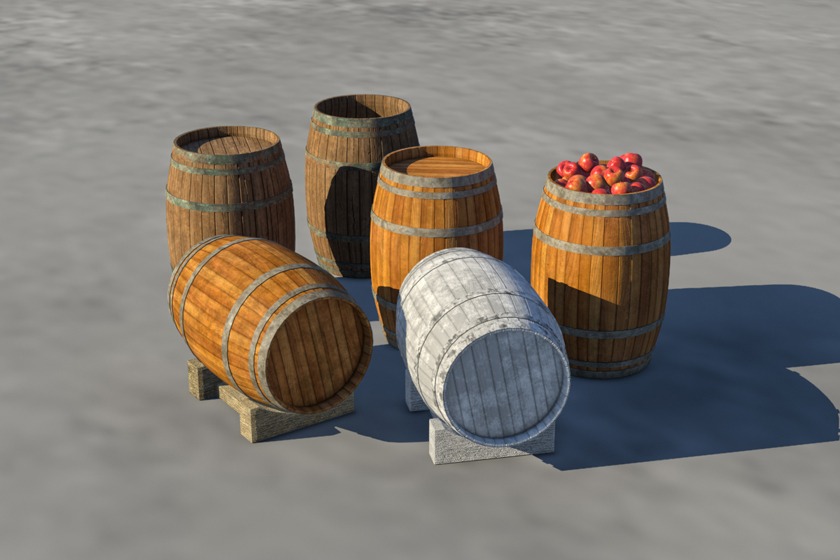
Besides foliage, I’ve also started building an assortment of small objects that will add detail to the scene. Here’s a selection of barrels that will be placed around the terminal area, on horse-drawn vehicles, and on the canal barges.

Some care has to be taken in placing the trees in the working scene. It’s easy to overdo it. A hundred years ago this area would have been nearly clearcut to make space for farming and canal construction. In the decades since, unchecked second-growth woods have filled in much of the area depicted in our scene.
The new scene rendering shows the foliage in place with a scattering of cirrus clouds in the sky. It’s beginning to look like a picture.
